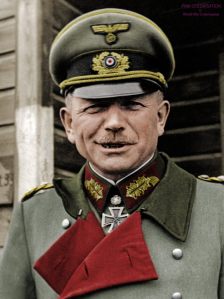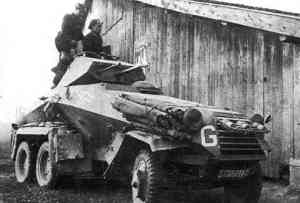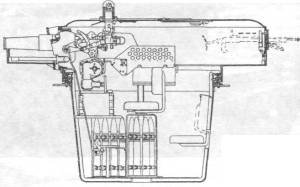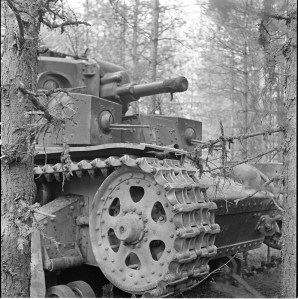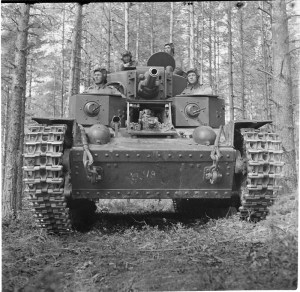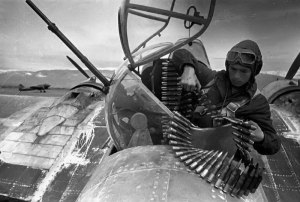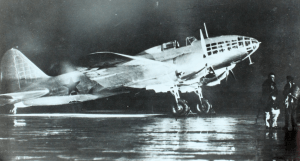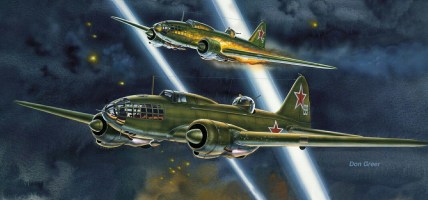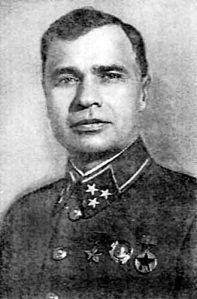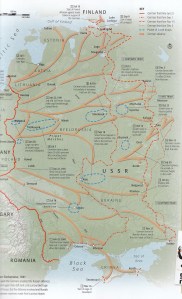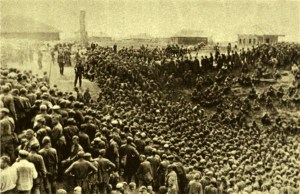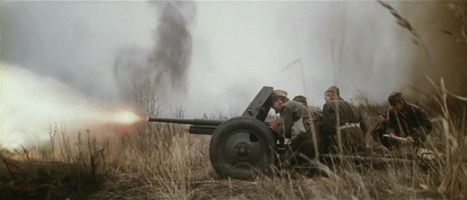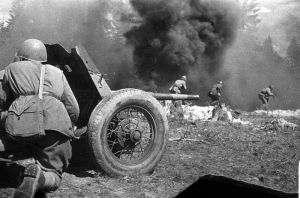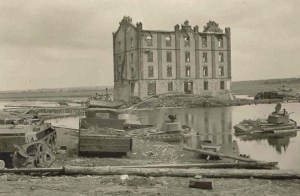[English version at the end]
PERSONAJES DE BARBARROJA
¡Ya a la venta Barbarroja 03:00 hrs!
IVAN IVANOVICH KOPETS, GENERAL-MAIOR VVS (1908-1941)
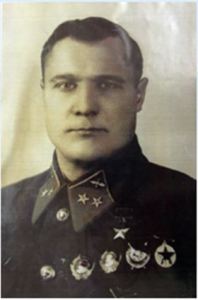
Piloto de caza curtido en la Guerra Civil Española donde tiene la oportunidad de combatir a los mandos de un I-15 “Chato” (“Chaika”). Con el nombre de guerra “José” es destinado en el Grupo nº 26 (aeródromo de Alcalá de Henares), cuya jefatura asumirá finalmente. Pelea tanto sobre los cielos de Madrid como en los del frente de Aragón a partir de diciembre de 1936. Sobre la capital de España los combates por ganar la superioridad aérea se intensifican, llegando a volar las unidades de aparatos soviéticos más de 100 salidas el 7 de noviembre de 1936. Kopets está presente. Al regresar a la URSS, el Kapitan Kopets, en junio de 1937 habrá conseguido 2 derribos más otros 4 compartidos. Más de 200 servicios de guerra obran en su cartilla de vuelo. Es condecorado Héroe de la Unión Soviética ese mismo año.
El 22 de junio de 1941, día de la ruptura de hostilidades con Alemania y sus aliados, y ya general, está al mando de las fuerzas aéreas del Distrito Especial Militar Occidental (Zapadny Osoby Voyenny Krug-VVS), con su cuartel general sito en la capital bielorrusa, Minsk. Sin duda, Kopets, es un comandante capaz pero la historia le reservará un fatal destino tras las primeras horas de la Operación Barbarroja. El despliegue de las unidades de vuelo del general-maior ocupa un saliente expuesto demasiado cerca de la frontera. Las divisiones aéreas mixtas (Smeshnye Avia Divizii) 9 SAD (Chyornykh), 10 SAD (Belov) y 11 SAD (Ganichev), unidades compuestas de bombarderos y cazas, son las que se encuentran peligrosamente próximas. Tal es así que en las primeras horas del Barbarossatag (día de Barbarroja) el comandante de una de las unidades del 9 SAD notifica a la cadena de mando ruido de motores y actividad altamente inusual al otro lado de la frontera. El 9 SAD es la unidad más moderna en equipación contando con nada menos que 200 MiG-3.
Al igual que en los otros teatros de operaciones, la Luftwaffe lanza una campaña de ataques sorpresivos a gran escala para destruir a la VVS en sus mismas bases. Son los aparatos del II. Luftflotte del Generalfeldmarschall Albert Kesselring. Las pérdidas soviéticas son inimaginables. El 9 SAD se lleva la peor parte. De poco le sirven sus novísimos aparatos MiG. Por contra de algunas bases del 11 SAD (área de Grodno) los aviadores de Kopets salen a volar y presentan batalla. A las 04:00 horas los primeros I-153 «Chaika» del 127 IAP/11 SAD (Istrebitelnyj Avia Polk <> Regimiento Aéreo de Cazas) interceptan sobre la ciudad de Grodno una formación de Junkers Ju-88A. En otras bases, habiendo recibido la alerta demasiado tarde, los pilotos están listos en las carlingas de sus aviones sin autorización de salir al aire…»No hay orden de despegue…es una provocación…un incidente local…«. En otras bases ni siquiera las órdenes de dispersión y enmascaramiento han llegado para evitar que filas enteras de aeroplanos aparcados ala con ala sean destruidos a placer por los germanos. Alguno comentará «...como en un ejercicio de tiempo de paz…«. Tan sólo las unidades de bombarderos más alejadas quedan incólumes hasta este momento y al atardecer llegan órdenes de atacar al adversario. No obstante la mayoría de las misiones de estos bimotores soviéticos, sin escolta de cazas, se saldarán con numerosas pérdidas a pesar del coraje mostrado por las tripulaciones soviéticas. Antes del anochecer el 47,3% de la aviación del inventario de Kopets (más de 730 aviones) habrá sido destruida [Red Air: Politics in Russian air power].

A últimas horas de la tarde, Ivan Ivanovich Kopets, toma un caza él mismo y sobrevuela numerosos de los aeródromos bajo su mando. Una total desolación se apodera de él al ser testigo de la debacle acontecida…de los restos calcinados de decenas de aviones con estrellas rojas…de los esqueletos de metal retorcidos…en suma, de lo que hacía unas horas antes era una poderosa fuerza de combate y ahora es sólo chatarra en aeródromos desiertos. Oficialmente, en su desesperación, en algún momento en la noche del 22 al 23 de junio de 1941 acaba con su vida descerrajándose un tiro. Muy probablemente, Kopets, acorralado, quiere de esta manera evitar el deshonor de un consejo de guerra con la posibilidad de morir frente a un pelotón de ejecución. Otros camaradas de armas en puestos similares sufrirán este trágico desenlace como Evgenyi Savvich Ptukhin…
¿Querrías conocer los detalles de esta y las demas operaciones?
¡Adquiere la obra cronológica Barbarroja 03:00h en edición de coleccionista!

Deja tu comentario abajo y síguenos haciendo click en la opción al final de la página
[English version]
BARBAROSSA’S PARTICIPANTS
IVAN IVANOVICH KOPETS, GENERAL-MAIOR VVS (1908-1941)

Seasoned aviator and fighter pilot himself, he is a veteran of the Spanish Civil War (1936-1939) with the nom de guerre “José”. He flies a biplane I-15 «Chato» («Chaika») in the 26th Fighter Group at Alcalá de Henares (near Madrid). Eventually he will take over command of the entire Group. He fights either in the skies over Madrid and those of Aragón (December 1936). Precisely over Madrid, the fight to gain the air superiority over the capital city intensifies relentlessly and on the 7th of November Soviet machines will fly up to 100 sorties. Kopets will make his contribution. When he returns to the USSR in June 1937, kapitan Kopets will be decorated as Hero of the Soviet Union. In Spain he is credited with 2 kills plus 4 shared ones. His pilot logbook records 200 war sorties.
On the 22nd of June 1941, at the outbreak of hostilities with Germany and her allies, and already promoted to General, he is in command of the Western Special Military District Air Forces (Zapadny Osoby Voyenny Krug-VVS). His HQ is located in Minsk, the Belorussian capital city. Undoubtedly Ivan Kopets is a very capable man, but History will spare for him a tragic fate after the first hours of the commencement of Operation Barbarossa. The array of his aerodromes are too exposed inside a salient too close to the frontier. His mixed air divisions (Smeshnye Avia Divizii) 9 SAD (Chyornykh), 10 SAD (Belov) and 11 SAD (Ganichev), composed of either fighters and bombers are indeed the most dangerously close. So it is that a few hours before the Barbarossatag (day of Barbarossa) one of these 9 SAD base commanders report to his chain of command unusual activity and engine noises behind the border. The 9 SAD is the most modern flying unit fielding 200 new MiG-3 fighters.
Like in the other theatres of operations, the Luftwaffe launches sneak air to ground attacks to finish off the VVS airplanes on their very same runways and aprons. These are the machines of Generalfeldmarschall Albert Kesselring‘s II. Luftflotte. The Soviet losses are appalling.The 9 SAD takes the worst. The Division‘s brand new MiG’s are of little value. On the contrary from the 11 SAD bases (Grodno area) Kopets airmen get airborne and fight. At 04:00 hours the aviators of the I-153 «Chaika’s» belonging to the 127 IAP/11 SAD (Istrebitelnye Avia Polk<>Fighter Air Regiment) intercept over Grodno a formation of Junkers Ju-88A. On other bases, having received the alarm too late, the pilots feel powerless in their aeroplanes without authorization to go airborne…»there’re no orders for take off…It is just a provocation…A local incident…«. On other aerodromes, the camouflage and dispersal orders have not being received and long lines of parked aircraft, wingtip to wingtip, are destroyed leisurely by the Germans like in a peacetime exercise. Only the furthest bomber units deep into Belorus remain up to now unscathed and in the afternoon the first mission orders will arrive. Nevertheless these bomber missions, lacking adequate or no fighter escort at all, will suffer tremendous losses in spite of the bravery shown by the Soviet airmen. At dusk 47.3% of Kopets aviation inventory (+730 machines) will have ceased to exist [Red Air: Politics in Russian air power].

In the evening of this fatal day, Major-General Ivan Ivanovich Kopets takes a fighter himself and overflies a number of his aerodromes. He witnesses the debacle…observes the smoldering remains of what just a few hours back was a powerful combat force and now just smoking twisted metal in deserted aerodromes. Oficially, absolutely devastated he finds no other escape but to shoot himself in the head sometime between the 22nd and the early morning hours of the 23rd of June 1941. Most likely Kopets wants to avoid criminal charges facing a court martial and the chance of terminating a bright career before a firing squad. Other comrades of arms in similar posts will suffer this fate like Evgenyi Savvich Ptukhin…
Did you find this article interesting? Leave your comments below and follow us clicking on «SEGUIR» at the end of the page


